Imagine this: It’s the end of another grueling workday, and instead of feeling relieved, you’re still tethered to your desk by invisible strings of unfinished tasks and looming deadlines. The chaos of work spills over into your personal life, blurring the lines between professional and personal time.
What if there was a way to sever these strings and reclaim your evenings? Enter the concept of a shutdown ritual, a powerful practice that enhances your work-life balance and boosts your productivity.
Understanding the Shutdown Ritual
A shutdown ritual is more than just closing your laptop or turning off the office lights. It’s a deliberate series of actions that signal to your brain that the workday is over, allowing you to transition smoothly into your personal time. This practice is crucial, especially in today’s world where work can easily encroach upon our personal lives.
What is a Shutdown Ritual?
At its core, a shutdown ritual is a sequence of activities designed to close out your workday. It’s like the final chapter of a book, wrapping up the narrative and setting the stage for the next day.
This could involve reviewing your accomplishments, organizing your tasks, and engaging in a physical action that signifies the end of work. The simplicity of the ritual is what makes it effective, providing a mental cue that it’s time to shift gears and focus on personal endeavors.
The Importance of a Shutdown Ritual
Why is a shutdown ritual so essential? It’s all about creating boundaries. In a world where emails and notifications can reach us at any hour, having a clear endpoint to the workday helps prevent burnout and stress. It allows you to detach from work mentally, ensuring you can fully engage in personal activities without the shadow of unfinished business looming over you.

Benefits for Work-Life Balance and Productivity
The benefits of a shutdown ritual extend beyond just mental well-being. Establishing a routine that marks the end of the workday enhances your work-life balance, allowing yourself to recharge and return to work with renewed focus.
This separation reduces stress and improves your sleep quality, as your mind is less likely to dwell on work-related thoughts during personal time.
Consider using a consistent phrase or action to mark the end of your workday. This could be as simple as saying, “Shutdown complete,” or performing a specific gesture. These actions serve as powerful cues to your brain, reinforcing the transition from work to personal time.
Crafting Your Personalized Shutdown Ritual
Creating a personalized shutdown ritual involves understanding your unique needs and preferences. It’s about finding what works best for you and incorporating activities that resonate with your lifestyle. Here are some steps to help you craft your own shutdown ritual.
Step 1: Reflect on Your Day
Begin your shutdown ritual by taking a moment to reflect on the day’s accomplishments. This reflection provides a sense of closure and boosts your motivation for the next day.
Consider keeping a journal where you jot down your achievements and any challenges you faced. This practice helps you acknowledge your progress and identify areas for improvement.

Step 2: Organize Unfinished Tasks
Next, address any unfinished tasks. Instead of letting them linger in your mind, organize them into a to-do list for the following day. Prioritize these tasks based on urgency and importance, ensuring you have a clear plan for tackling them. This step is crucial in preventing work-related thoughts from disrupting your personal time.
- List your tasks in order of priority.
- Assign specific times for each task in your schedule.
- Set realistic goals for what you can accomplish the next day.
Step 3: Clean Your Workspace
A cluttered workspace can lead to a cluttered mind. Spend a few minutes tidying up your physical and digital environments. Close unnecessary tabs, organize loose papers, and create a clean slate for the next day. This simple act enhances your focus and provides a sense of accomplishment.

Step 4: Plan for Tomorrow
Planning for the next day is vital to a successful shutdown ritual. Outline your top priorities and tasks, ensuring you start the day clearly and purposefully. This proactive approach reduces morning stress and sets a positive tone for the rest of the day.
Allocate specific time blocks for each task on your list. This method, known as time blocking, helps you manage your workload efficiently and keeps you on track throughout the day.
Step 5: Perform a Physical Action to Signal Closure
Finally, engage in a physical action that signifies the end of your workday. This could be as simple as pushing in your chair, turning off the lights, or even closing your laptop with a satisfying click. These actions create a mental shift, reinforcing the transition from work to personal time.

Ideas for Effective Shutdown Rituals
While the core elements of a shutdown ritual remain consistent, the specific activities can vary based on personal preferences. Here are some ideas to consider when crafting your own shutdown ritual.
Mindfulness and Reflection Activities
Mindfulness can enhance your shutdown ritual by promoting relaxation and mental clarity. Consider meditation, deep breathing exercises, or even a brief gratitude journal. These activities help you unwind and shift your focus away from work-related stress.
Physical Activities to Transition
Physical activities, such as a short walk or light stretching, can effectively signal the end of your workday. These activities release endorphins, boosting your mood and helping you easily transition into personal time. Even a few minutes of movement can profoundly impact your mental well-being.

Digital Clean-Up and Organization
In today’s digital age, managing your online workspace is as important as tidying your physical environment. Close unnecessary tabs, organize your digital files, and clear your email inbox. This digital decluttering not only enhances focus but also prevents work-related distractions during personal time.
Engaging with Family and Hobbies
Use your shutdown ritual to reconnect with family or engage in hobbies that bring you joy. Whether spending quality time with loved ones, pursuing a creative project, or simply enjoying a favourite pastime, these activities provide a sense of fulfilment and balance.

Common Pitfalls and How to Avoid Them
While a shutdown ritual offers numerous benefits, it’s essential to be aware of common pitfalls hindering its effectiveness. By understanding these challenges, you can take proactive steps to avoid them.
Overcomplicating Your Ritual
One common mistake is making your shutdown ritual too complex. Simplicity is key to ensuring the ritual is sustainable and easy to follow. Focus on a few core activities that help you unwind and transition into personal time.
Inconsistency in Practice
Consistency is crucial for a successful shutdown ritual. Establish a routine and stick to it, even on days when you’re tempted to skip it. Over time, your mind will recognize the ritual as a signal to switch off from work-related thoughts.
Consider setting a specific time each day for your shutdown ritual. This consistency reinforces the habit and makes integrating it into your daily routine easier.

Neglecting the Importance of Boundaries
Without clear boundaries, work-related thoughts can easily spill over into personal time. Ensure that your shutdown ritual includes actions that create a distinct separation between work and personal life. This might involve setting specific working hours or designating a physical space for work activities.
Success Stories and Community Experiences
Learning from others’ experiences can provide valuable insights and inspiration for your own shutdown ritual. Here are some examples of effective shutdown rituals and how they’ve transformed individuals’ work-life balance.
Real-Life Examples of Effective Shutdown Rituals
Consider the story of Emily, a freelance writer who struggled with work-life balance until she implemented a shutdown ritual. By spending 15 minutes each evening reflecting on her day and planning for the next, Emily found that she could fully disconnect from work and enjoy her personal time without guilt.

Sharing Your Own Shutdown Rituals
Sharing your shutdown ritual with others can create a sense of community and accountability. Consider discussing your experiences with colleagues or friends, and encourage them to develop their own rituals. This exchange of ideas can lead to new insights and improvements in your own practice.
Taking the First Step Today
Embarking on creating a shutdown ritual is a powerful step towards achieving better work-life balance and enhanced productivity. Here’s how you can get started today.
Creating a Simple Shutdown Routine
Identify the key activities that resonate with you and align with your lifestyle. Keep the routine simple and focused, addressing your specific needs and preferences. Remember, the goal is to create a sustainable practice that enhances your overall well-being.

Commit to a Week of Practice
To truly experience the benefits of a shutdown ritual, commit to practicing it consistently for at least a week. This trial period allows you to assess its impact on your work-life balance and make any necessary adjustments. Be patient and open to experimentation as you refine your routine.
Reflecting on Your Progress
After a week of practice, take the time to reflect on your progress. Consider how the shutdown ritual has affected your stress levels, productivity, and overall sense of balance. Use this reflection to fine-tune your routine and build a habit supporting your personal and professional growth.





